Smartphone sales plateau in rural areas; Nvidia nears $1 trillion market cap riding AI wave
Also in this letter:
■ BGMI relaunched in India after a year
■ Infographic Insight: Gamers and their devices
■ A softer Q1 awaits the Indian IT services sector
Rural users hang up on smartphone-buying plans
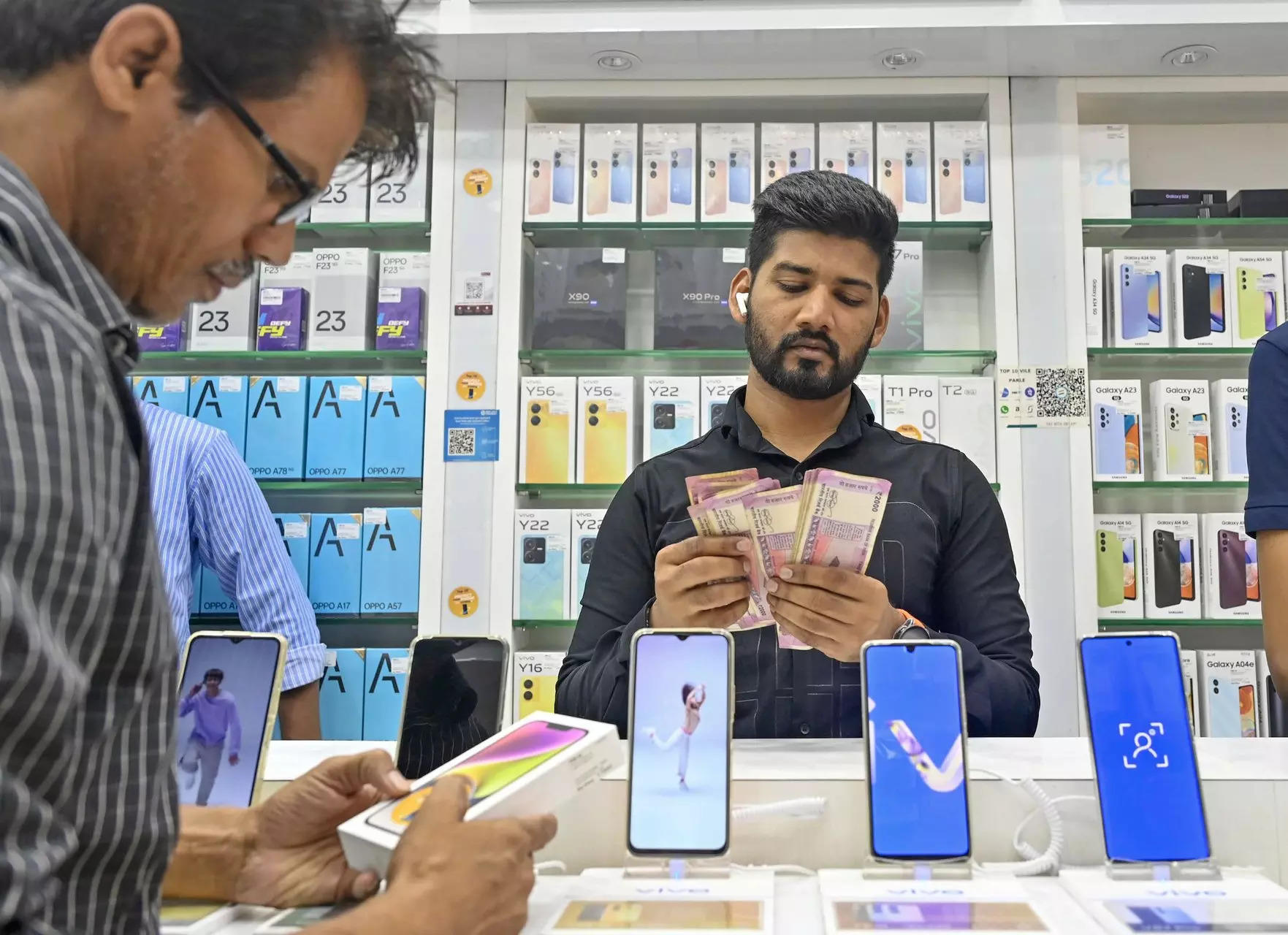
Independent research has shown that spending weakness has resulted in a slowdown in smartphone sales in rural areas, with top-tier cities still contributing a significant proportion of smartphone sales.
Driving the news: The digital divide between rural and urban areas has been widening, with smartphone sales in smaller towns and villages stagnating at 35-40% since mid-2021 amid rising prices and few takers for 5G devices.

Data decoded: In 2022, 35-40% of the 122 million smartphones sold in the country were bought in rural India, according to research firm IDC India. The share remained consistent in the first quarter of 2023, with 37.2% of the 24 million smartphone sales recorded in rural areas.
In the January-March quarter, only about three of every ten 5G smartphones sold in the country found takers in rural India, IDC India found.
Expert take: “Rural users find feature phones more convenient to use for voice calls due to a low cost of ownership, longer lasting batteries. The uneducated masses, especially females, find smartphones more complicated,” said Navkendar Singh, associate vice president at IDC India.

Stark contrast: An IIFL Securities report states that users have not returned the 4G feature phone launched by Jio after three years of use despite the option to get back the Rs 1,500 security deposit that had to be paid by customers at the time of purchase.
The phenomenon is in sharp contrast to urban areas, where the increasing demand for 5G smartphones has driven up the average selling price (ASP) to an all-time high of $265 (about Rs 21,000), as per IDC.
AI boom, data centres propel Nvidia’s market cap close to $1 trillion

Last week, US chipmaker Nvidia became $184 billion more valuable — bringing it within kissing distance of $1-trillion market capitalisation (m-cap) — after blowing past Wall Street’s quarterly sales expectations, largely on a surge in demand for artificial intelligence (AI).
What happened? Nvidia’s stock rallied 24%, leading to one of the largest m-cap jumps ever after it projected quarterly revenue more than 50% above the average Wall Street estimates and said it would have to supply more AI chips in the second half to meet demand.
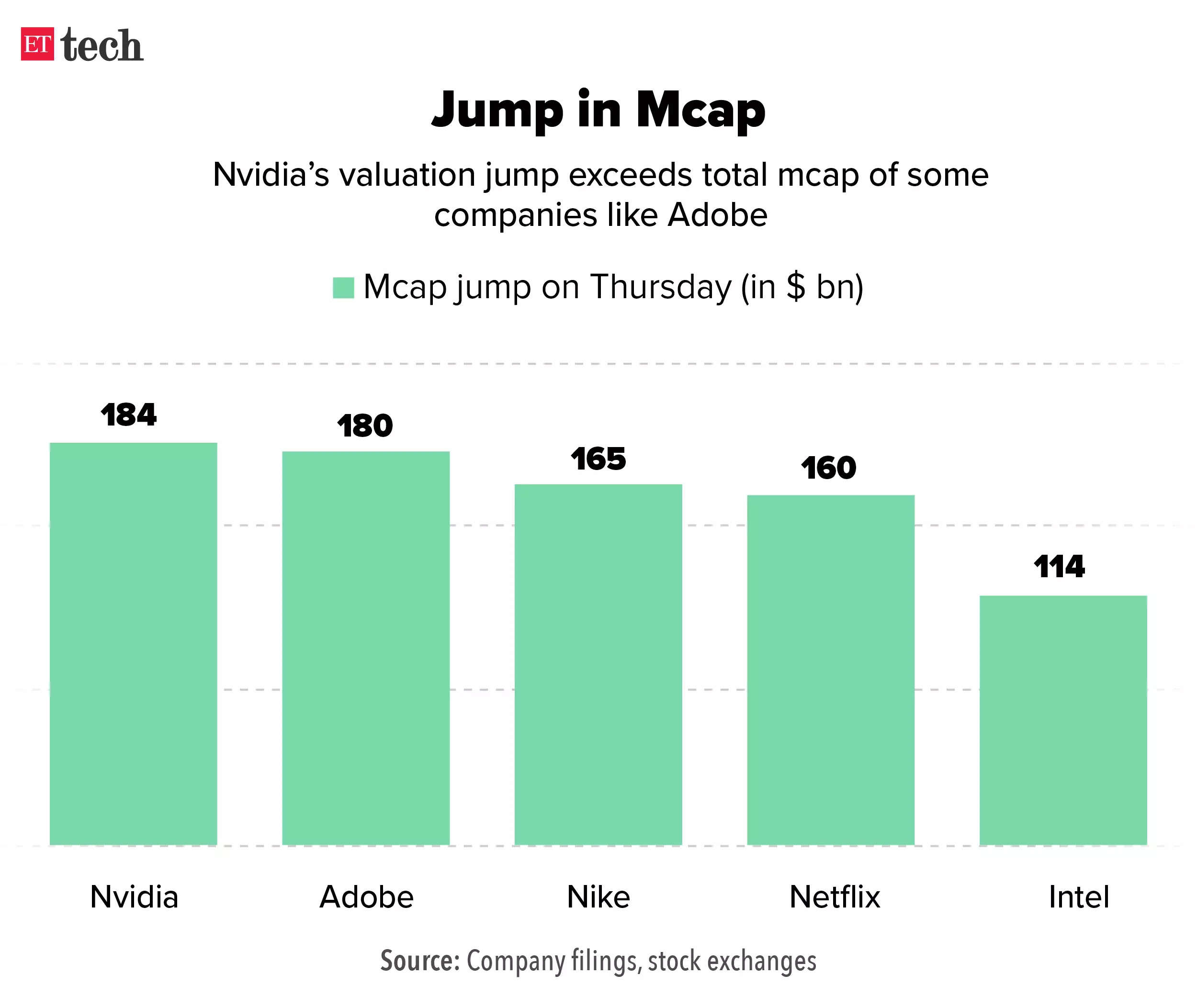
Fillip from ChatGPT: Viral chatbot ChatGPT has made generative AI a buzzword this year. The large computers that process data and power generative AI run on powerful chips called graphics processing units (GPUs). Nvidia produces about 80% of the world’s GPUs and ChatGPT uses thousands of them.
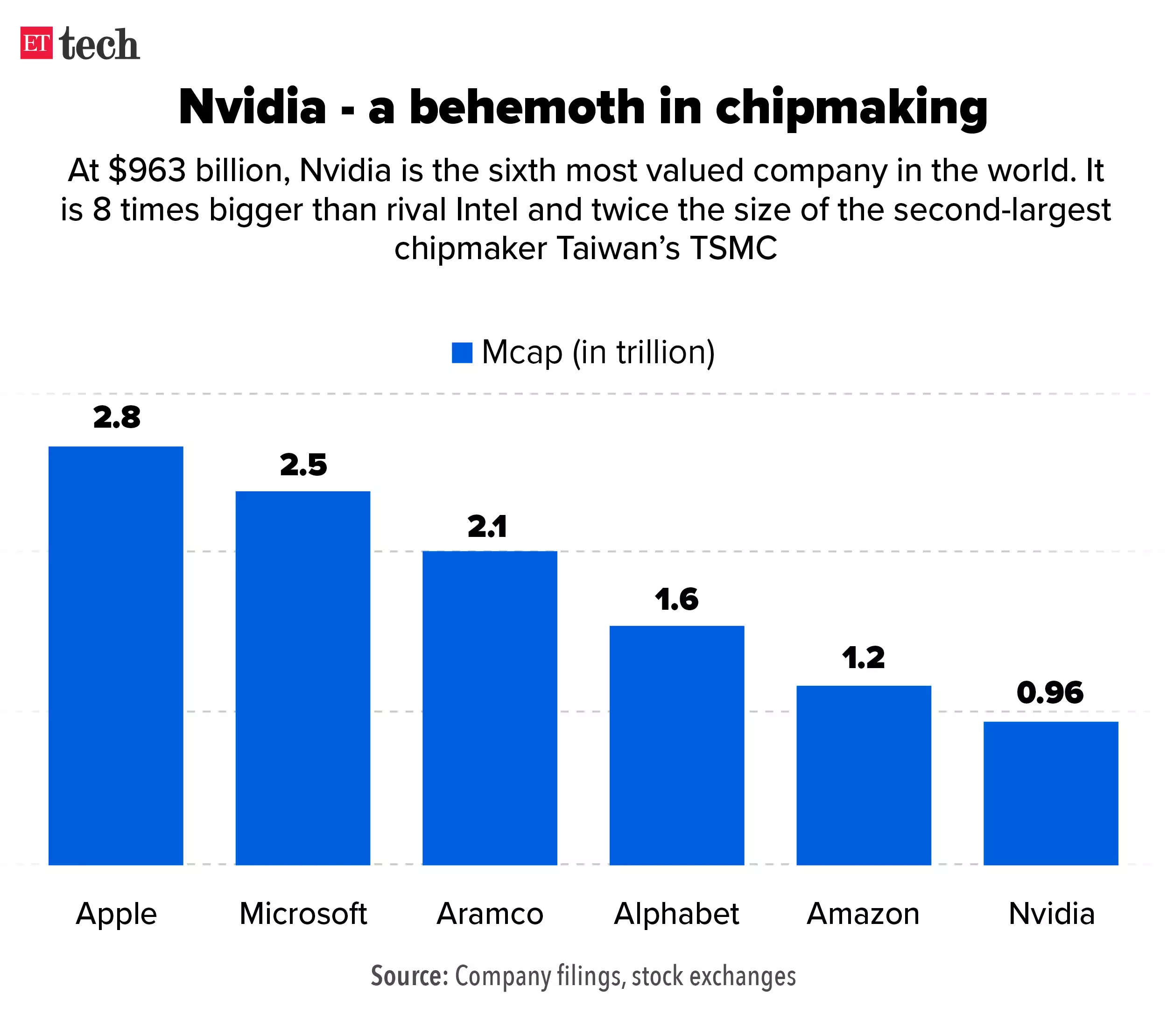
Data centre pivot: Nvidia, known for its game chips, has pivoted to the data centre market over the last few years. Its business rapidly expanded during the pandemic as gaming took off, cloud adoption surged and crypto enthusiasts turned to its chips to mine coins.
Also read | ETtech Web Story: Seven key takeaways from Nvidia’s m-cap closing in on $ 1 trillion
More AI products: Nvidia chief executive officer Jensen Huang unveiled a new batch of products and services tied to artificial intelligence, including an AI supercomputer platform called DGX GH200, which will help tech firms create ChatGPT successors. It is also releasing a networking offering designed to turbocharge the speed of information within data centres.
Krafton relaunches BGMI after a year-long ban
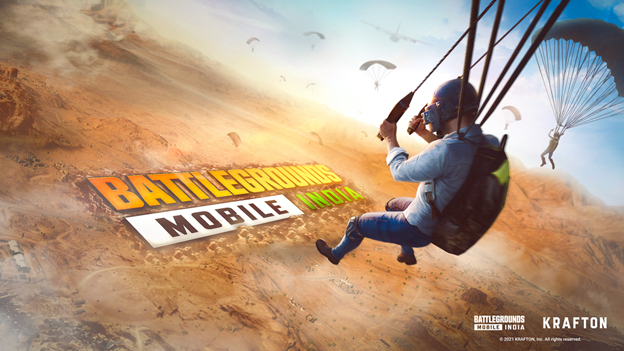
On Monday, South Korean game maker Krafton announced the relaunch of popular mobile game Battlegrounds Mobile India (BGMI) almost a year after it was banned by the Indian government under Section 69 of the Information Technology (IT) Act.
Caveats: Krafton said playtime for users under 18 will be restricted to three hours, whereas, for other players, it will be six hours daily, to “promote responsible gaming practices”.
The ban on the game has been lifted for 90 days, following which the government is expected to review whether it is in compliance with Indian laws and decide whether to lift the ban permanently or block it again.
Tell me more: The game was available for download from May 27 for Android users and from Monday for iOS users. Play opened only on Monday.
“You can now download the game and begin playing starting today. However, to ensure a smooth and seamless experience for everyone, the game’s playability will be rolled out in phases,” read a notification on the app on Monday.
Catch up quick: BGMI’s earlier version, PlayerUnknown’s Battleground (PUBG), was first banned by the central government in 2020 along with 117 other apps with Chinese links. At the time, the game was distributed by Chinese tech conglomerate Tencent in India.
Infographic Insight: Which device do gamers prefer the most?
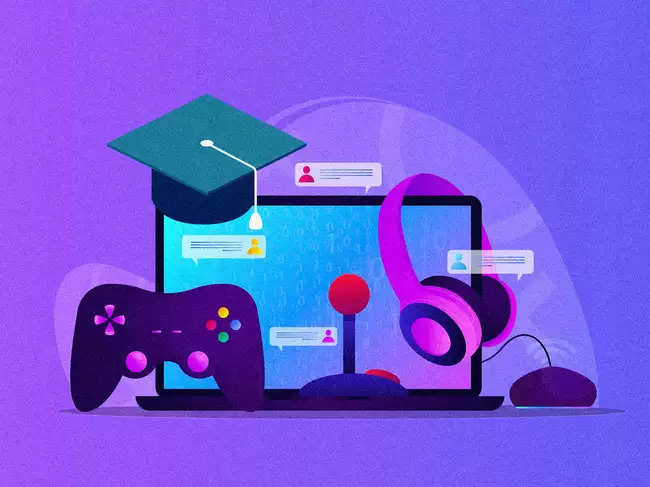
Recently, Sony unveiled Project Q — a device that looks like the two halves of the PS5’s Dualsense controller glued to an iPad mini — which has left the internet confused.
A recent report from Statista suggests that smartphones are the most preferred device for gamers in the US.
According to the report, 57% of US respondents who regularly play video games prefer to do so on a smartphone. This is closely followed by 35% who preferred a gaming console and 29% on a PC.
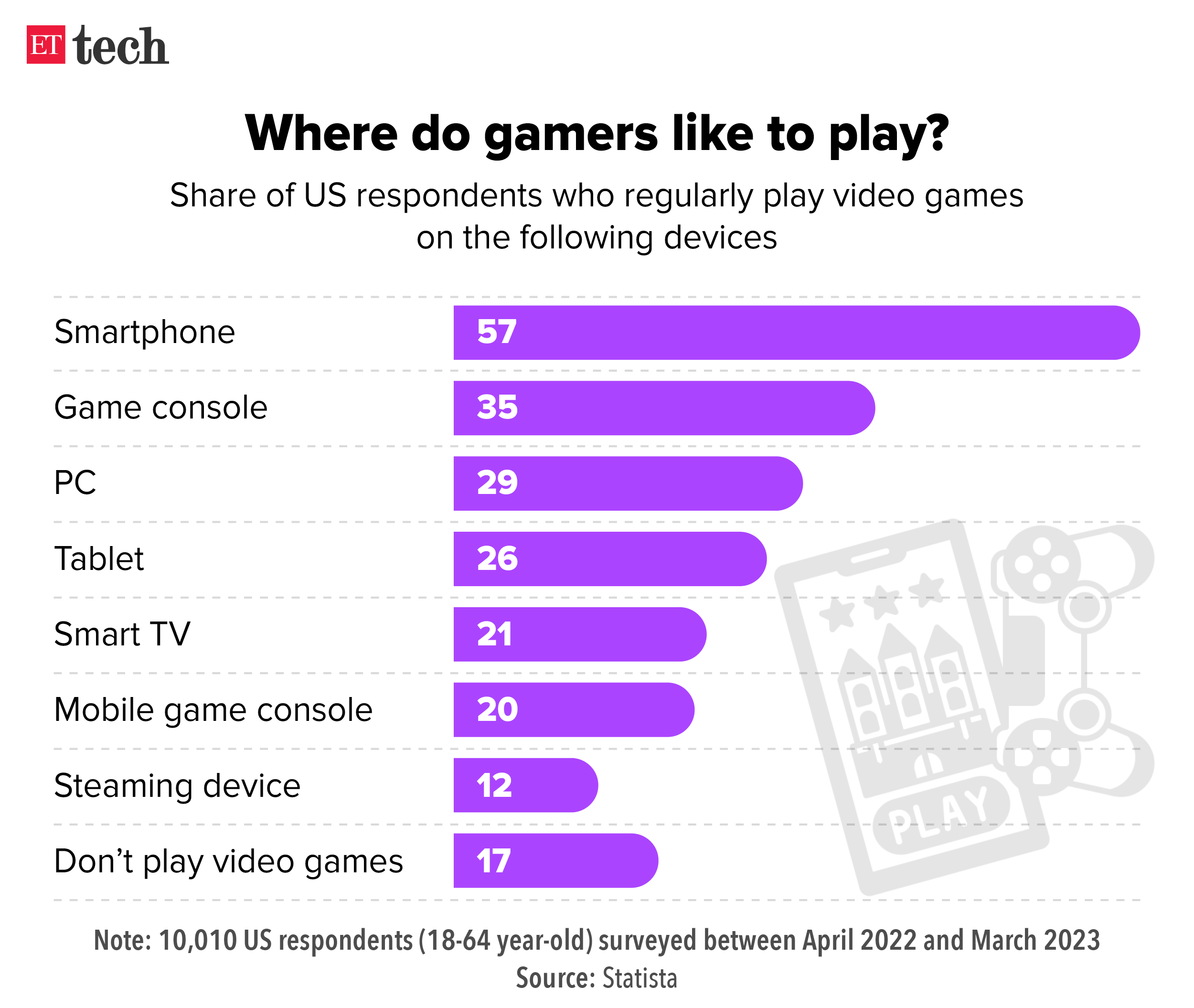
Tweet of the day
June quarter may be softer than Q4 for the IT services sector
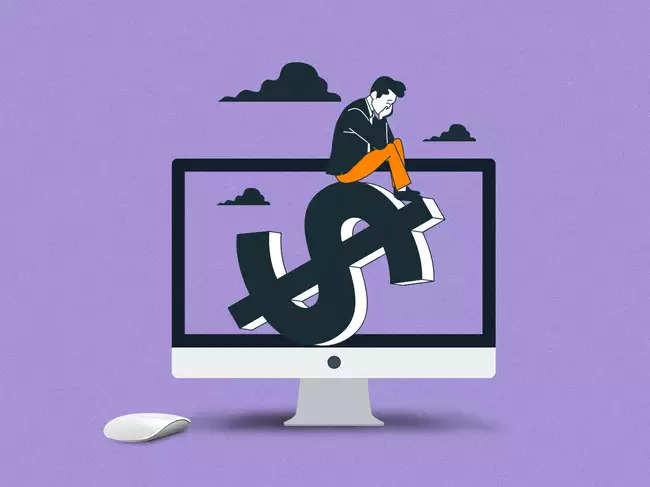
Following a modest fourth quarter (Q4) of FY23, analysts expect the first quarter (Q1) of FY24 to be even softer, according to a report in The Times of India.
Why so glum? Discretionary spending by clients in some verticals, such as banking and financial services and communications, is still low, and the broad-based slowdown is expected to continue.
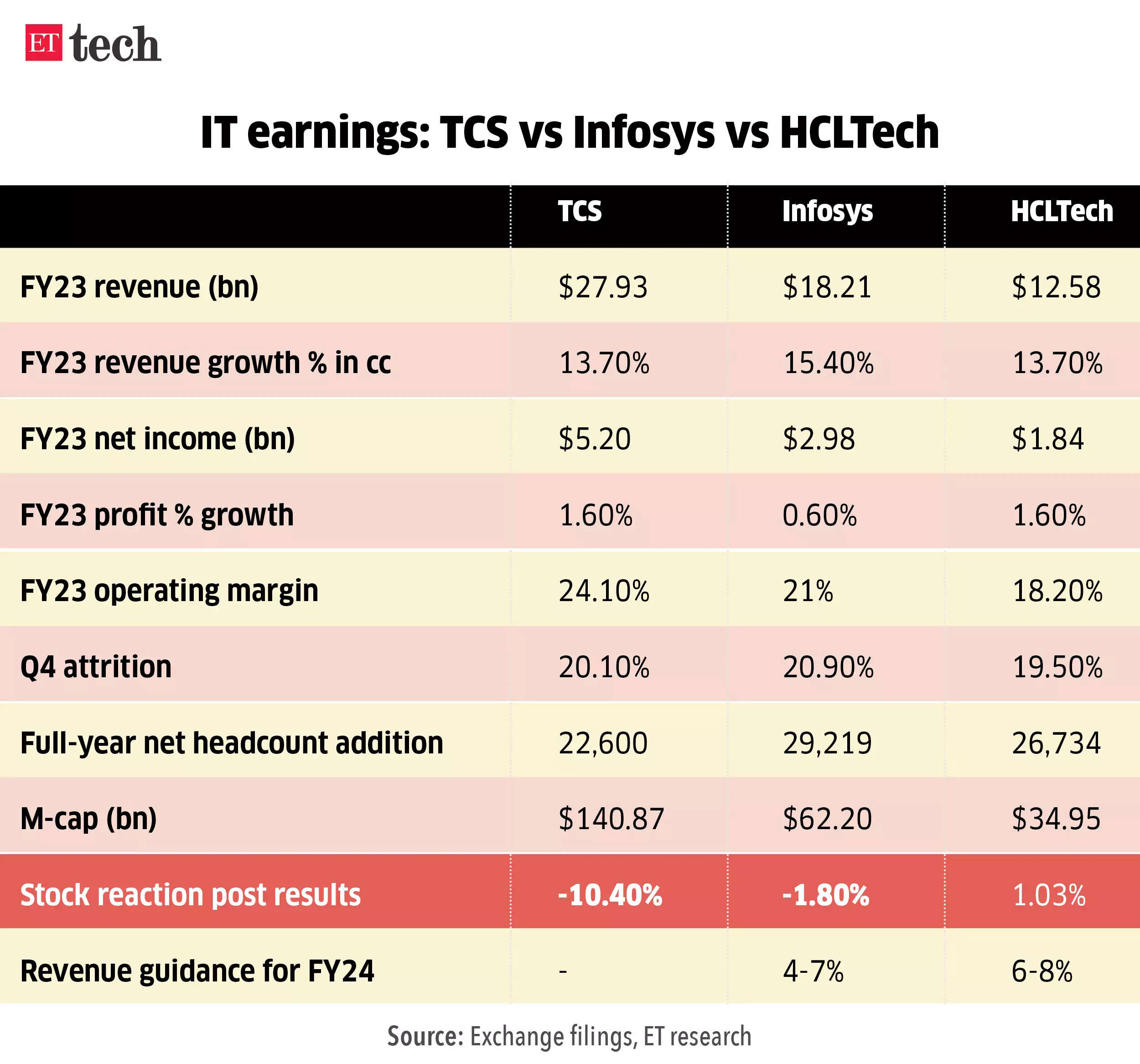
Analyst stance: “Except for Infosys, the June quarter could be weaker than the March quarter for many companies. We attribute the weakness to project pauses and cancellations in North America and select verticals such as banking and communications. The pause and cancellations in February accelerated in March. The full impact of this will be visible in the June 2023 quarter,” Kotak Institutional Equities analysts Kawaljeet Saluja, Sathishkumar S, and Vamshi Krishna said in a note.
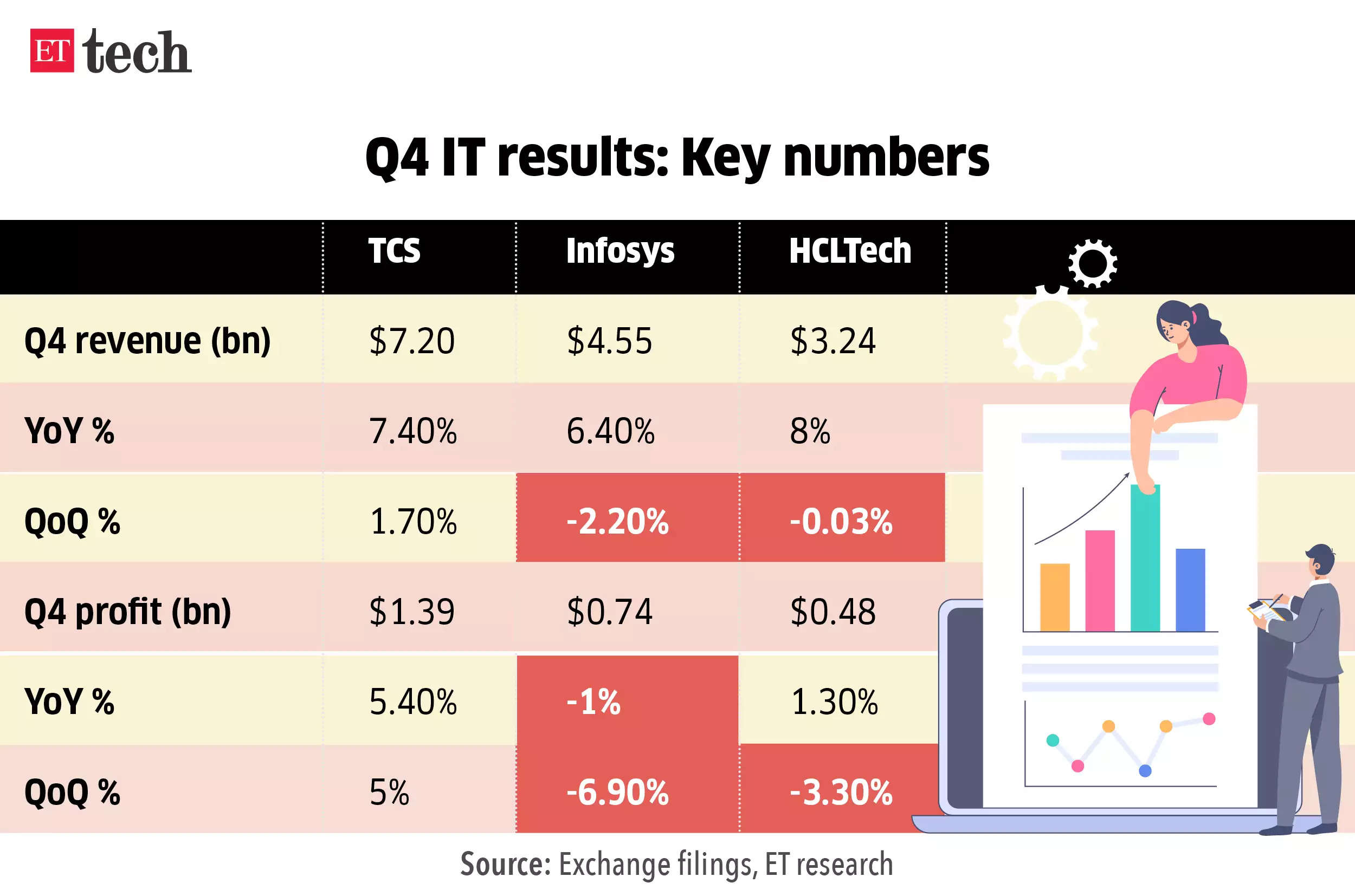
Uncertain environment: ET reported on April 24 that management commentary about macro headwinds impacting demand, unexpected project rampdowns and revenue forecasts for FY24 suggested that the post-pandemic digital push and tech spending splurge by clients will come to a halt.
Also read | In charts: Big three Indian IT companies get set for tough FY24
Today’s ETtech Top 5 newsletter was curated by Gaurab Dasgupta in New Delhi. Graphics and illustrations by Rahul Awasthi.
For all the latest Technology News Click Here

